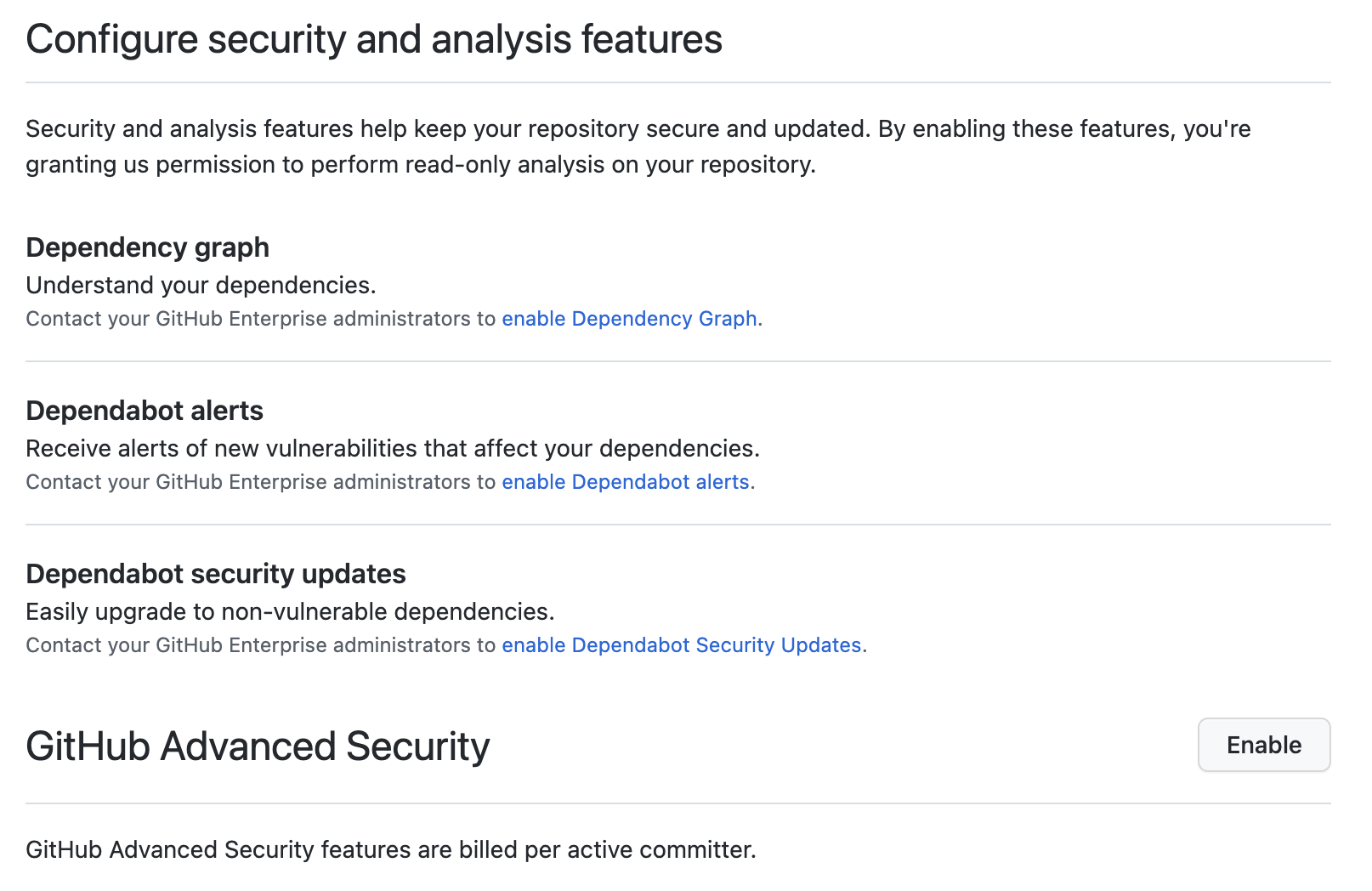About dependency review
Dependency review helps you understand dependency changes and the security impact of these changes at every pull request. It provides an easily understandable visualization of dependency changes with a rich diff on the "Files Changed" tab of a pull request. Dependency review informs you of:
- Which dependencies were added, removed, or updated, along with the release dates.
- How many projects use these components.
- Vulnerability data for these dependencies.
For more information, see "About dependency review" and "Reviewing dependency changes in a pull request."
About configuring dependency review
Dependency review is available when dependency graph is enabled for the instance and Advanced Security is enabled for the organization or repository. For more information, see "Enabling GitHub Advanced Security for your enterprise."
Checking if the dependency graph is enabled
-
On GitHub, navigate to the main page of the repository.
-
Under your repository name, click Settings. If you cannot see the "Settings" tab, select the dropdown menu, then click Settings.

-
In the "Security" section of the sidebar, click Code security and analysis.
-
Under "Configure security and analysis features", check if the dependency graph is enabled.
-
If dependency graph is enabled, click Enable next to "GitHub Advanced Security" to enable Advanced Security, including dependency review. The enable button is disabled if your enterprise has no available licenses for Advanced Security.

About configuring the dependency review action
The dependency review action scans your pull requests for dependency changes and raises an error if any new dependencies have known vulnerabilities. The action is supported by an API endpoint that compares the dependencies between two revisions and reports any differences.
For more information about the action and the API endpoint, see the dependency-review-action documentation, and "REST API endpoints for dependency review."
Here is a list of common configuration options. For more information, and a full list of options, see Dependency Review on the GitHub Marketplace.
| Option | Required | Usage |
|---|---|---|
fail-on-severity | Defines the threshold for level of severity (low, moderate, high, critical).The action will fail on any pull requests that introduce vulnerabilities of the specified severity level or higher. | |
fail-on-scopes | Contains a list of strings representing the build environments you want to support (development, runtime, unknown). The action will fail on pull requests that introduce vulnerabilities in the scopes that match the list. | |
comment-summary-in-pr | Enable or disable the reporting of the review summary as a comment in the pull request. If enabled, you must give the workflow or job the pull-requests: write permission. | |
allow-ghsas | Contains a list of GitHub Advisory Database IDs that can be skipped during detection. You can find the possible values for this parameter in the GitHub Advisory Database. | |
config-file | Specifies a path to a configuration file. The configuration file can be local to the repository or a file located in an external repository. | |
external-repo-token | Specifies a token for fetching the configuration file, if the file resides in a private external repository. The token must have read access to the repository. |